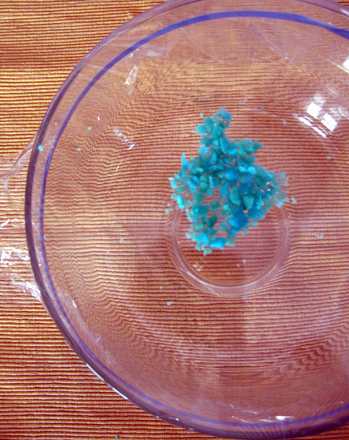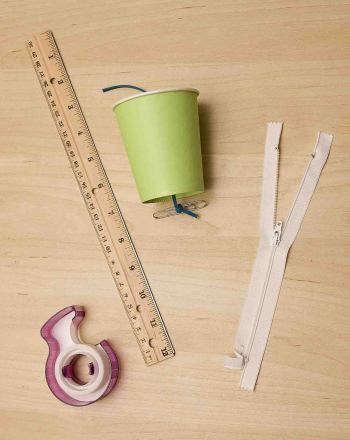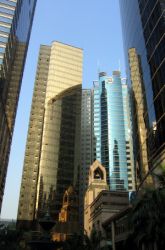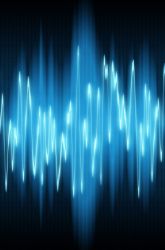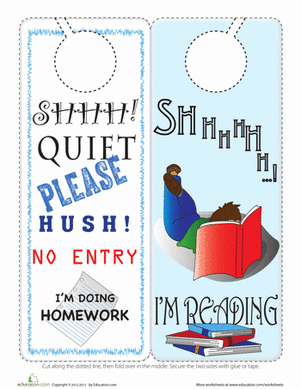Science project
Acoustics: The Study of Sound
2011 VIRTUAL SCIENCE FAIR ENTRY
Abstract
Purpose: The purpose of this experiment is to determine what kind of materials absorb sound waves of varying frequencies the most effectively.
Procedure: To test the sound insulation properties of each material, I used a enclosed box , to ensure a consistent environment for testing, a computer sine wave generation program, and a sound intensity meter. I placed each material in a the groove in the center of the box, then , using a speaker at a constant volume, would turn on the sine wave generator. I then took a reading of the sound level as measured by the sound meter, and compared each measurement to the original sound intensity, with no medium between speaker and meter, to determine that materials effectiveness.
Conclusion: I determined that the acoustical insulation material was the best and blocking the sound waves, this is that the material was designed to do, and this agrees with my hypothesis. The second best insulator was the wood plank, due to its density compared to the other materials used.
Type
Grade
Difficulty of the Project
Cost
Safety Issues
The only safety issue in my project was that of extended exposure to loud sounds, and to counter this I wore ear protection for time which the experiments were taking place.
Time Taken To Complete the Project
Objective
This project was about testing and experimenting with different materials to find which material, and in general, which traits of materials make them the most effective at stopping the transmission of sound.
Materials and Equipment
One 12 foot long 2x4 board( to build the sound box)
All of these materials were either found at the local store, o on the internet, and all were readily available.
Introduction
The background information for this project took the form of a 10 page review of literature, which I will not paste here to conserve length. The review of literature consisted of a study of the nature of sound, and waves in general, and how these waves interact with different materials.
The study of sound, acoustics, is very important in modern society as things become louder and louder but people want their lives to be quite. There is extensive research being done in the field of sound dampening to meet these popular needs today. The complete nature of a wave's interaction with a material is incredibly complex, and can not be fully understood by any person except professionals, so this leaves many minute questions open at the end of the experiment.
Terms and Concepts for Background Research
Many things had to be researched prior to the beginning of this experiment as I was unfamiliar with wave mathematics, and had done very little work with sound its self in the past.
Research Questions
How does sound interact with surfaces?
How does sound travel and propagate?
How does the composition of a material effect its acoustic properties?
These are but just a few of the many questions required to be answered for this project.
Results






The shape of the box which was used to contain the experiment had a large effect on the results, and one would fine that using a different shape or size box would result in different data. That being said, the box used was a constant throughout the series of experiments, so it will not have effected the overall data of the experiment. The graphs are of the averages of the three trials of each material, but the data table following the graph for the experiment contains the data from each individual trail in addition to the averages. Most materials had an effect in reducing the sound intensity measured by the meter, but over all the acoustical material was the best at insulating, and wood was close behind. Tin foil actually caused to sound to amplify, most likely because it reflected the wave completely, which formed resonant waves.
Conclusions
As can be seen by the data tables, the acoustical insulation material was the best over all insulator of sound in the experiments of each frequency, which is as was predicted in the hypothesis. One can also see, that each other material was not as consistent as the acoustical insulation. each was differently effective at different frequencies of sound. This is due to the density and properties of the materials themselves, and the complex way these changes effect how the material interacts with waves, and specifically sound waves.
The main source of error in this experiment is due to the inaccuracy of the sound level meter, which has an analog display only accurate to the tenths place, so all of the values were slightly off of the actual value. This should not have effected the overall trends of the data in a very serious way though, because all of the trials and materials were subject to this same inaccuracy. To keep this source of error to a minimum, I allowed to meter to settle until it seemed to be sitting at one value, and took care to carefully discern this value as accurately as possible from the gauge.
Questions for Further Research
To expand upon the concept of this experiment I would use a much wider variety of materials, and I would also change minute details of the materials to sees how these small changes would affect the acoustic properties of this material.
Bibliography
Acoustical Society of America, The. (16, October 2010). Acoustics. Retrieved from http://www.acoustics.org/education.html
Acoustical Surfaces Inc. (11, October 2010). Sound Absorption. Retrieved from http://www.acousticalsurfaces.com/acoustic_IOI/101_7.htm
Alex, D. (18, October, 2010). The Soundry. Retrieved from http://library.thinkquest.org/19537/Physics4.html
Avison, John. (1999). The World of Physics. Nelson Thornes Publishing Co
Department of Physics. (1967). Generation of Transverse Waves by Non-Linear Wave-Wave Interaction. Univeristy of Alberta
Giancoli, D.C. (1988). Physics for Scientists and Engineers 2nd Edition. Prentice Hall
Nave, R. (14, October, 2010). Sound Reflection. Retrieved from http://hyperphysics.phy-astr.gsu.edu/hbase/sound/reflec.html
Russel, D. (1999). Longitudinal and transverse wave motion. Kettering Univeristy: Kettering University Applied Physics
Speech Privacy Systems Inc. (2010). Sound Masking vs Sound Cancellation. Retrieved from http://www.speechprivacysystems.com/voicearrest-sound-masking-systems/sound-masking-vs-cancellation/
University of California. (1996). Universe of Light: What is the Amplitude of a Wave? Retrieved from http://cse.ssl.berkeley.edu/light/measure_amp.html#measure4
Wikipedia Inc. (13, October 2010) Sound Proofing. Retrieved from http://en.wikipedia.org/wiki/Soundproofing
Education.com provides the Science Fair Project Ideas for informational purposes only. Education.com does not make any guarantee or representation regarding the Science Fair Project Ideas and is not responsible or liable for any loss or damage, directly or indirectly, caused by your use of such information. By accessing the Science Fair Project Ideas, you waive and renounce any claims against Education.com that arise thereof. In addition, your access to Education.com's website and Science Fair Project Ideas is covered by Education.com's Privacy Policy and site Terms of Use, which include limitations on Education.com's liability.
Warning is hereby given that not all Project Ideas are appropriate for all individuals or in all circumstances. Implementation of any Science Project Idea should be undertaken only in appropriate settings and with appropriate parental or other supervision. Reading and following the safety precautions of all materials used in a project is the sole responsibility of each individual. For further information, consult your state's handbook of Science Safety.

